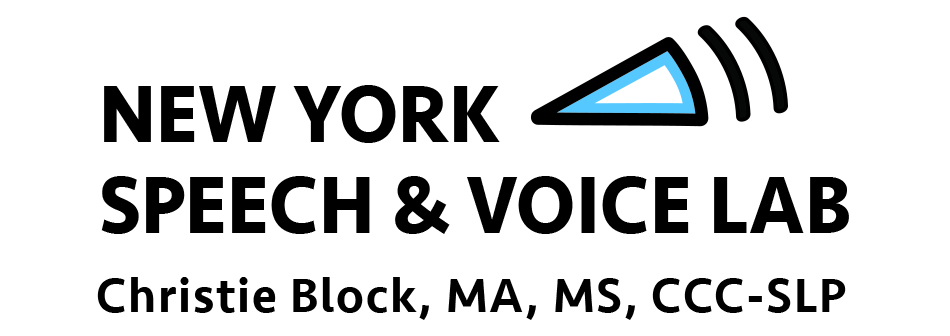Gender affirming voice care for gender diverse speakers
The way we speak can play a major role in embodying gender. Because of that, our communication can be a powerful tool for exploring and defining who we are and how people view us. No matter how we identify or present - transfeminine, transmasculine, male, female, non-binary, gender non-conforming, genderqueer, bi-gender, agender, cisgender, other – we all deserve to speak in a way that feels good and be treated equally and respectfully. Do you have voice dysphoria and/or concerns about being gendered correctly by others when communicating with them? Or perhaps you have other goals or objectives for modifying your speech?
How do you get started? What do you want and need in terms of voice presentation? What have and will other people be expecting when communicating with you? These questions relate to three criteria, what I call the “three-A’s,” that can apply when developing a combination of speech, voice, and communication techniques that are right for you - finding techniques that are authentic (what feels true to you), knowing what is acceptable (what is effective based on the norms and expectations of the outside world), and making techniques automatic (what becomes easy to perform with less and less mental effort). When considering norms, pitch is often the first thing that comes to mind, but other voice features, such as resonance and intonation, can be significantly modified as well. In most American communities where English is spoken, a more feminine-perceived voice is often viewed or described as being lighter, brighter, and more expressive, while a more masculine-perceived voice is often viewed or described as being heavier, bigger, and more matter-of-fact.
But this doesn’t mean that these features are exactly true or that all women always speak or should speak one way, or all men always speak or should speak another way. Many factors come into play: Body size, acquired voice habits, age, social situation, social status, topic of conversation, region of the country, and others. And each person often speaks slightly differently across different situations. Many people can sound quite different from each other but still fall within a so-called feminine or masculine range. If you aim to speak within a certain range, voice training can help you do that while also finding a way to be uniquely you within that range. And with confidence and resilience. Gender can be a very tricky thing for anyone of any gender, with negative stereotypes, unfair assumptions, and systemic gender discrimination, which can be compounded by racism, classism, and other forms of discrimination. I keep those important issues in mind when helping you to navigate expectations, avoid microaggressions, and self-advocate. I utilize what I know about research, norms, and perceptions in service to your views of gender and identity as you personally approach and manage our gender system, whether binary, non-binary, or non-conforming. I serve you, the whole person, so that you can communicate within the multiple roles (professional and personal) you take on in life, whether it’s being a parent, a boss, a neighbor, and so on.
Regardless of how often you present in a way that is authentic to you, voice change is almost always possible, and even the smallest changes can make a difference. As the process begins, you will need to allow your voice to be in limbo until you advance further, much like other parts of transition or gender expression changes. Behavioral voice change usually involves a period of solid practice as well as experimentation with your voice in real life when possible, and then letting it settle over time. As you try different techniques, you will be considering how new sounds relate to your view of yourself as your presentation evolves voice-wise and/or gender-wise. Because of that, training is not completely about practicing technical skills. It’s also about discussing how to OWN your new skills in your head and heart, and address any fears or mental obstacles that may arise in the process. These may be internal struggles or external factors pertaining to the situations you are in.
Vocal health is also an important issue. If you are manipulating your voice without professional guidance, you may be prone to tension, vocal strain, or overworking of the vocal mechanism. Additionally, all speakers of any gender can be affected by overall health or certain health conditions, such as acid reflux, environmental allergies, asthma, or even a high amount of stress.
I provide a perceptual-acoustic speech/voice evaluation, including measurements of your exact habitual pitch and pitch range. I can help you identify your existing communication patterns, and determine what aspects can be changed or utilized more. In training sessions, I use my trained ear, pitch software, video, a pitch tuner, and other tools to give you the critical immediate feedback you need to try new techniques and put them into practice. I will likely have many discussions with you regarding how you are experiencing your voice, how it fits with your goals, and how to deal with various speaking situations as they arise. As a cisgender woman, I am honored to be a provider and committed advocate to the transgender and gender non-conforming (TGNC) community, and I continually seek to advance my work with cultural humility and responsiveness. And as a health professional, I also take a serious approach to vocal health by considering your overall health, vocal load, and vocal habits, and referring for a videostroboscopy exam as needed to rule out any vocal fold problems that may or may not affect training.
Please refer to the other gender affirming pages on this website for further information about techniques and results.
